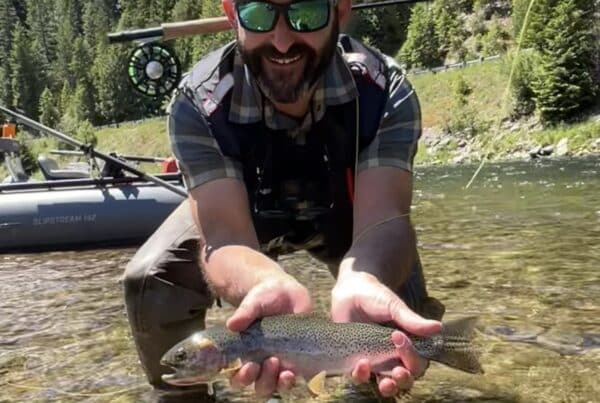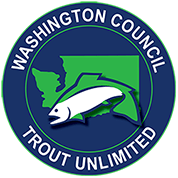Scoping Comments on the NOI to Prepare a National Environmental Policy Act Environmental Impact Statement Pursuant to May 4, 2016 Order of United States District Court, D. Oregon in National Wildlife Federation, et al., v. National Marine Fisheries Service, et al..
Submitted by Ed Chaney, Director
Northwest Resource Information Center
February 7, 2017
First and Foremost: Stop deceiving the public. NEPA requires full disclosure, not continuation of the Action Agencies’ notorious pattern of deception to cover up their historic betrayal of the public trust.
The September 30, 2016 scoping letter on the CRSO EIS states that potential alternatives to the status quo will be identified to meet the Action Agencies’ authorized purposes. This letter and the farcical, so-called public information outreach meetings/materials, are more of the same deceptive disinformation the Action Agencies have propagated for decades.
NEPA requires that the Action Agencies provide the public an honest, transparent statement on the purpose of and need for the EIS. I.e., a federal district court judge ordered the EIS be done explicitly to force the Action Agencies to evaluate breaching the four lower Snake River dams because the existence of the dams threatens the existence of Snake River salmon.
In ordering the preparation of an EIS, Federal District Court Judge Simon stated that removing one or more of the four lower Snake River dams “. . . is an action that NOAA Fisheries and the Action Agencies have done their utmost to avoid considering for decades.”
The Action Agencies may not evaluate only alternatives to the status quo that meet their “authorized purposes”. You are legally required to evaluate alternatives that are outside your legal jurisdictions if that alternative is reasonable.
“Alternatives that are outside the scope of what Congress has approved or funded must still be evaluated in the EIS if they are reasonable, because the EIS may serve as the basis for modifying the Congressional approval or funding in light of NEPA’s goals and policies.” CEQ FAQ, 46 Fed. Reg. at *18027.
According to Judge Simon’s decision, “It is doubtful the Action Agencies could demonstrate that breaching, bypassing, or removing one or more of the Snake River dams is not ‘reasonable’ under NEPA.”
Breaching the four Lower Snake River dams is not only reasonable, it has been decisively demonstrated at the cost of billions of public dollars that breaching is the only alternative that will comply with the Endangered Species Act; Native American treaty reserved rights to fish; Rivers and Harbors Act of 1945, Public Law 79-14, which required the dams be constructed to provide safe passage for salmon; laws establishing Wilderness areas, National Recreation Areas and Scenic Rivers with protecting Snake River salmon as primary purposes; Fish and Wildlife Coordination Act; Northwest Power Act; and federal land management policies vis-à-vis protecting native species.
Each alternative evaluated in the EIS must be explicitly tested for compliance with the purposes and requirements of these laws.
The EIS must not hide the Snake River Basin in the forest of the entire Columbia River Basin under the guise of a review of Columbia River Systems Operations. This deceptive tactic has done yeoman’s service for the Action Agencies for decades in driving Snake River salmon onto the List of Endangered Species and keeping them there to date.
As noted, the court’s primary purpose in forcing the Action Agencies to prepare an EIS was to force them to evaluate the alternative of breaching the four lower Snake River dams. There is an operative FEIS on improving survival of Snake River salmon, which was produced at enormous public expense. (Final Lower Snake River Juvenile Salmon Migration Feasibility Report/Environmental Impact Statement, U.S. Army Corps of Engineers, February 2002.)
In the present effort, the Action Agencies should give priority to updating the existing FEIS. Doing so will inform what, if any, changes in the rest of the FCRPS may be required if the four lower Snake River dams are breached, which as noted, has been incontrovertibly demonstrated to be necessary if the requirements of multiple laws are to be met.
The EIS must reveal what caused the problem the EIS is designed to resolve, notably the threatened extinction of Snake River salmon.
I.e., the four lower Snake River dams were fraudulently “justified”, and negligently were not designed to safely pass salmon as required by the authorizing legislation. Billions of dollars have been spent attempting to overcome the inherent design flaw, to no avail. The EIS should provide accounting of the measures taken, their costs since construction, and projected future cost of continuing the status quo.
The EIS must reveal, in sufficient summary detail for the public to clearly understand, the serial rejection of Biological Opinions nominally prepared by NOAA Fisheries in collaboration with the Action Agencies which led to them being forced by the court to do an EIS.
In evaluating the relative costs and benefits of alternatives to the status quo, the EIS must evaluate all costs and benefits, economic, ecological, social and cultural, not just those that are priceable.
The following documents are incorporated into these comments by reference.
184 F.Supp.3d 861, United States District Court, D. Oregon. National Wildlife Federation, et al., Plaintiffs, v. National Marine Fisheries Service, et al., Defendants. Case no. 3:01cv-00640-SI. Signed 05/04/2016.
Letter from Secretary of War to Speaker of the House of Representatives, June 7, 1938 (House of Representatives Document 704, 75th Congress, 3rd Session), submitting a report, together with accompanying papers and illustrations on reexamination of Columbia and Snake Rivers, Oreg., Wash., and Idaho, Authorized by Section 6 of the River and Harbor Act approved August 30, 1935, and Requested by Resolutions of the Committee on Commerce, United States Senate, Adopted May 21, 1938, August 21, 1935 and June 10, 1936.
Special Report on Selection of Sites Lower Snake River, Oregon, Washington, and Idaho. Prepared by Corps of Engineers, Portland District, Portland, Oregon, dated March 14, 1947. In some sources, this report is dated August 1, 1945. Library of Congress TC, 557.3, .S6, A512, c.2.
Final Lower Snake River Juvenile Salmon Migration Feasibility Report/ Environmental Impact Statement, U.S. Army Corps of Engineers, February 2002.
The Northwest Big Short; Fact Sheet, A Northwest Energy Solution: Regional power benefits of the lower Snake River dams—Spin Doctors Hoist Bonneville Power Administration On Its Own Petard. Northwest Resource Information Center. June 2016. http://nwric.org/reports.html
Northwest Information Center, Inc. v. Northwest Planning 35 F.3d 1394 (9th Cir. cert. denied, 116 S.Ct. 50
NRIC v. NW Power and Conservation Council, 730 F.3d 1008, 1021 (9th Cir. 2013).
NRIC v. NWPCC No. 15-714 82 (9th Cir. pending).
N.W. Envtl. Def. Ctr. v. Bonneville Power Ass’n, 117 F.3d 1520 (9th Cir. 1997).
Request for U.S. Department of Energy Inspector General Investigation of Waste of Federal Funds and Violations of Other Federal Laws by Scofflaw Culture in Upper Management of Bonneville Power Administration, 42 pp. Northwest Resource Information Center. March 4, 2013. http://www.nwric.org/documents/DOE_IG_petition.pdf.
Idaho Economic Effects of Breaching/Not Breaching the Army Corps of Engineers’ Snake River Dams in S.E. Washington—A Survey of the Disconnect Between Economic and Political Realities. Northwest Resource Information Center. March 2002. http://nwric.org/reports.html.
Duping The Northwest and Nation—The U.S. Army Corps of Engineers’ Economics of Restoring Endangered Snake River Salmon. Northwest Resource Information Center. December 2000. http://nwric.org/reports.html.



















